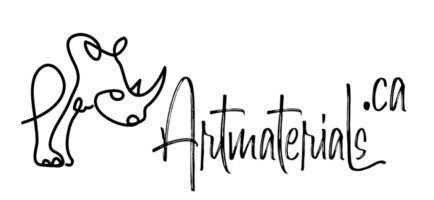All oil painters have their own lists of oil painting essentials for everyday work. There are many tools, mediums, brushes and many colours available so it’s very easy to get lost. Especially, for beginners.
On top of that oil paints are quite expensive and not everyone can afford buying more supplies than really needed. Let’s see what you’ll really need to start and what can wait till a better moment. Below you can find some recommendations based on our practice and experience. It may be different from what other artists think and use as all artists are different and have heir own preferences.
Different techniques require different brands of oil paints
- Alla Prima. Technique implying working wet-on-wet and finishing a painting during one approach. Most impressionists and a lot of contemporary artists use this technique. For this technique you need good selection of basic colours, especially reds and yellows. Student grade colours have lower pigment load as well as may have some white inside those colours that can “melt” and provide some muddy look. Your choice should be focused on opaque paints that provide pure colours. So, you’ll need artist and professional brands of oil paints, such as (from our shop) Gamblin, Master Class, Old Holland, Dartecor, Art Spectrum and other brands.
- Flat technique doesn’t require too much paint to use and you can make few layers one on top another to enhance the colours. You’ll need to mix colours though, but not in big quantities. So, for underpainting casual brands (Ladoga, Rosa Gallery etc.) would work well, and for top layers – professional ones (MasterClass, Gamblin, Art Spectrum etc.).
- Impasto. Here you’ll need thick paints and probably you’d be interested in saving 🙂 The thickest but still not too expensive brand is Art Spectrum. The other brand with very high viscosity is Old Holland, but it may be too pricey for bulk use. One of the options is using wax-based medium that created texture, but wax has it’s own drawbacks that will be discussed in other articles.
- Glazing and multi-layering. Here you need minimum fillers and maximum pigment load, so use professional brands only, such as Old Holland or Dartecor.
Different techniques require different oil colours choice
- Old Masters’ techniques imply a lot of glazing and working with transparent, but still intense, colours. They usually used monochrome underpainting in combination of white and earthy colours and then many glazing layers with transparent paints. That’s how their painting shine and make an impression of glass between two realities. So, here you’ll need titanium white, burnt and raw sienna, raw umber, ochres, and transparent yellows (hanza yellow, Indian yellow etc.), reds (alizarin crimson, pyrrole red etc.), blues (ultramarine and maybe some phthalo shades), greens (nicosia green, phthalo green), and earthy kids of mars.
- Landscapes. Opaque colours are important here, so choose red, yellow, and orange cadmiums, oxide chromium for green, blue and turquoise cobalts, titanium white, and a variety of earthy colours. It’s also good to have good purple, such as cadmium purple, for accents and shadows.
- Portrait. Your choice will be pretty much the same as the Old Master’s techniques plus some opaque colours, depending on your style.
- Still lives and flowers. Bright and opaque colours are must have. You’ll need more kids of yellow (cadmium yellow lemon, medium and deep, Indian yellow, hanza yellow), reds (cadmium red, alizarin crimson, quinacridones), pink and magenta colours (quinacridone rose, magenta, cadmium purple), good blues (ultramarine, phthalo, cobalts), green (chromium oxide, phthalo, cobalt), and purple (ultramarine violet, cadmium purple). You’ll also need titanium white and good selection on earthy colours (yellow and golden ochre, burnt sienna, burnt or raw umber etc.).
- Abstract. Here everything depends on the style, but definitely a lot of titanium white and opaque colours we discussed above.
Different techniques require different brush choice
- Impasto. For this technique you’ll need a brush that holds a lot of paint. Natural hog bristle brushes preferably with shorter hair for more controllable application would work the best.
- Glazing. Your focus will be soft brushes. Everything depends on particular technique, but most likely you’ll need to have a couple of kolinsky sable brushes in your collection.
- Flat. Synthetic brushes would work best of all. Some of them are softer, while the others stiffer – choose what matches your hands. Hog bristle may be too stiff and kolinsky or squirrel may seem too soft.
Do I need palette knife?
You may or may not use palette knives for painting, but we still recommend to have one medium size metal palette knife for mixing colours and cleaning your palette or scraping paints from your painting in case of failure.
What kind of palette to choose?
For oil painting you’ll need a flat palette. Everything else is a matter of taste: oval, rectangular, plywood, wooden, glass, plastic, wax paper or foil… Many choices are available now.
Do I need oil mediums?
You’ll definitely need painting oil (linseed or another one depending on properties you want to achieve). All other mediums are extra. Read more about different mediums in our knowledge base.
How to choose support?
We always recommend to begin with primed and stretched canvas for oil painting. However other options are always possible. We’ll explain the difference between different types of canvas and how to choose a good one in our articles.
What is a budget?
It’s possible to make a very small trial set for oil painting under $100, but if you want full size tubes and brushes that last longer, your budget for basic kit will be between $150-200. It can go higher, of course, if you buy top-quality paints and larger size of canvas. For some brands, a brush can cost you $70+ or a tube of paints – $100+ (such as Lapis Lazuli).
(c) RUSART



























